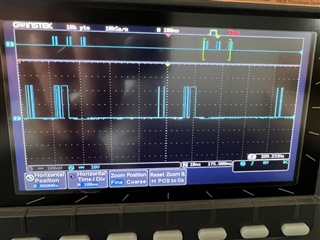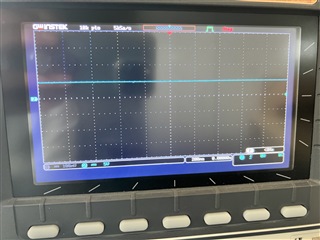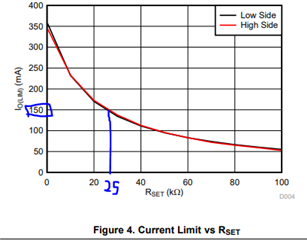Other Parts Discussed in Thread: TIOL1115, TIOL1113
Hello,
The pins on the TIOL1115EVM are connected to the STM32 Microcontroller as following:
Enable pin as output pin with internal pull down resistor
Wake pin, and Nfault as input pin with Interrupt on falling edge with internal pull up resistor
TX to TX , RX to RX and GND from TIOL to GND on STM32 nucleo board.
The Jumper for Enable (JMP 5) is enabled by connecting it to VCC In/Out and the Jumper for ILM_ADJ (JMP 1) is connected to 25K resistor.
There are 3 cases that might be helpful for diagnosis of the problem i am facing:
1. When i connect the MCU pins to TIOL1115EVM as described above and power the MCU the Nfault led lightsup indicating a fault without the master and the +24V connected to TIOL, but it immedtiately goes away when the two grounds are separated.
2. when i first power on the TIOL1115EVM through the master without the MCU being connected, it still indicates the fault and Nfault drops from 5V to 2.5V when the IOLink master tries to communicate and sends the wakeup pulse, although the wakeup pulse is recognised by TIOL it immediately triggers the Nfault pin led and the wake pin led on.
3. When i connect the Master and the respective pins on the MCU and power on the device and MCU, the wake up is recognised as it lits up, but the Nfault also light up immediately and voltage is 0V indicating a error.
What can be the reason for that, i have +24V stable Voltage so under voltage does not seems to be the reason , over temperature also does not seems to be the reason because it is in a ventilated open space and
I am unsure where to measure for the over current condition?
The RX line also always just transmits a +5V constant signal after the wakeup is recognised by TIOL1115EVM.

Above is the scope when CQ and L- is monitored without connected to the device.

Above: Scope when monitored between CQ and L- when connected to TIOL1115EVM only (no Microcontroller) and wake led lit.

Above: RX and L- when monitored with CQ line connected to TIOL1115EVM and Wake Led lit (low level).


